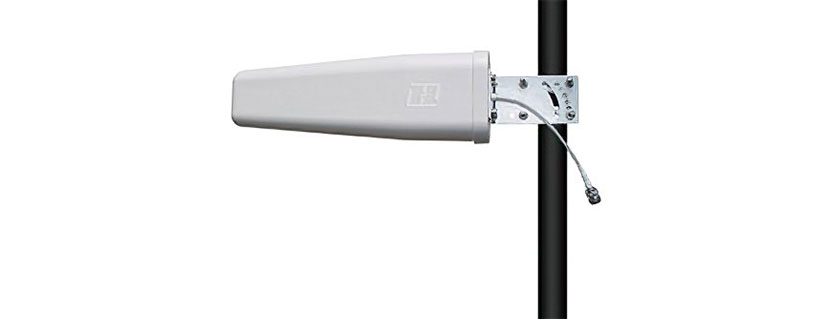Directional Antennas Explained
In reality, all types of RF antennas have some degree of directionality. However, there are certain antenna designs and types that are particularly directional compared to other antenna types. A Directional Antenna is useful in applications where it is desirable to receive a signal from a specific direction of origin or otherwise transmit a signal in a specific direction. The directivity of an antenna is judged based on how much of the input energy into the antenna is channeled into the primary direction of the antenna. In theory, an absolutely directive antenna would send virtually all of the signal energy in a single straight line, minus interconnect and antenna losses.
However, no real directional antenna is ideal, and the directivity is ultimately limited by the design and construction of the antenna. Moreover, directional antennas operate in a limited frequency range where they are most direct. Some types of directional antennas are very limited in bandwidth, while there are other designs that have broad bandwidths, but there are often trade-offs in size, weight, efficiency, design complexity, and/or cost to achieve these performance goals. As with most RF passive components and active devices, the relative size of directional antennas is proportional to the operating frequency range of the antenna, with higher frequency antennas being proportionally smaller than lower frequency antennas.
An example of where directive antennas are used are to receive the very weak signals from geo navigation systems, such as GPS Antennas. Other examples include point-to-point microwave and millimeter-wave backhaul links and during various forms of testing, including electromagnetic compatibility testing. Panel and Patch Antennas are directional antennas often used with cellular and wireless telecommunications and backhaul applications due to their slim profiles and high directivity. Yagi Antennas are another common type of directional antenna that are often used for ISM band applications, and many other industrial, SCADA, scientific, and medical purposes.
Gain Horn Antennas are a type of highly direction waveguide antenna, of which there are many types. Some waveguide gain horn antennas have a coaxial-to-waveguide adapter integrated into the antenna, while others use standard sized waveguide inputs. It is important to note that waveguide gain horn antennas, even with coaxial ports, are limited in frequency range to the waveguide size, with the exception of broadband waveguide horn antennas, which are specifically designed for optimal bandwidth. Gain Horn Antennas are often used in test and measurement applications and are often used to measure the performance of other antennas for certification, compliance, or other measurement applications.
Courtesy of Pasternack

